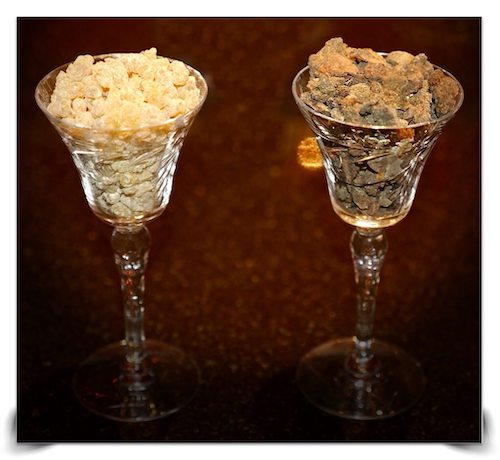
From earliest history until today, fragrant, alluring smells have been regarded as essential elements of civilized relationships. Exotic plant odors and the scents that could be utilized for body application have inspired explorers, aristocrats, writers, poets, merchants and priests, and they have been of fundamental relevance to religious practices and to courtship. Many societies have felt that the burning of fragrant woods provides an ideal, ethereal token of appreciation to their gods. The liberation of incense smoke was a source of perfume: this word comes from the Latin per fumum, “by smoke”. Incense is a word that means “that which is lit”. The main incense fragrances were frankincense and myrrh.
The sophisticated Greeks greatly appreciated such aromatic sources (aromata) as the turpentine tree, and this became an important import. They also valued the older Egyptian fragrant woods, and their exudates, such as those of myrrh, frankincense (olibanum) and cinnamon. Enormous amounts of money were spent on these exotic imports. The Greek island of Chios was the source of the valued gum exudate mastic as well as turpentine; the mastic was also used as a sort of chewing gum, and it gave rise to the word masticate. The more precious perfume incenses and spices came as imports through Arabia along well-established incense routes to be eagerly purchased by Mediterranean merchants who sold them to satisfy the increasing demands of markets throughout Europe.
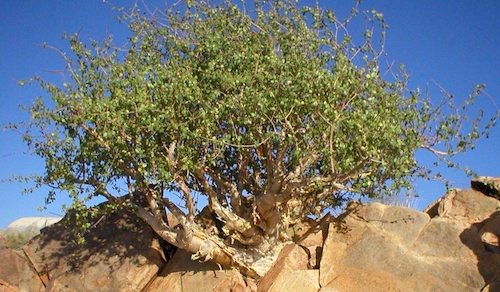
Queen Hatshepsut is generally regarded by historians as one of the most successful pharaohs of Egypt. She lived in the 15th century B.C. and had a long and successful reign, marked by building projects and trading expeditions unrivalled by any other culture for a thousand years. As well as being the first great woman in recorded history, inaugurating a long peaceful era and bringing great wealth to Egypt, she can also fairly lay claim to being the world’s first arboriculturist.

Historians agree that the highlight of her reign was an expedition to the fabled land of Punt. For it's time the expedition was enormous, consisting of five ships, each measuring seventy feet long and with several sails. Each ship accommodated 210 men, including sailors and thirty rowers; only returning after a two year long voyage along the African coast. When her fleet of five ships returned after the two year voyage they brought back five shiploads of various goods, yet the most prized of all their cargo was 31 live frankincense trees. The trees had been carefully excavated and their roots bound in balls of their indigenous soil for the duration of the long voyage. Upon arrival Hatshepsut had the trees planted in the courts of her Deir el Bahari mortuary temple. When these exotic trees were planted it would become the first known transplanting and establishment of foreign trees.
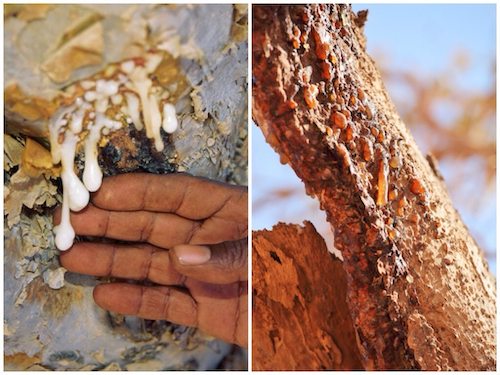
The most important ancient fragrances were frankincense and myrrh. The Arabs used the milky sap of the frankincense tree, and called it al lubán, from the word for milk. (The same word gave rise to the name of Lebanon, whose mountains were always capped by milky snow). “Al lubán” became anglicized to olibanum, which is another name for frankincense; the latter name refers to the pre-eminence of this resin, the true or frank incense. Frankincense came mainly from the Dhofari region of Oman, and the best of this fragrant oleoresin source still characterizes this remote region. Harvesting the resin requires a specially designed knife. A week before the harvest begins, strategic slashes are made in the outer bark which allow the liquid resin to ooze out. Another harvesting method used is to simply scrape away portions of the bark without making deep incisions and allowing the resin to flow from this wound. When the resin hits the oxygen, it starts to crystallize and harden.
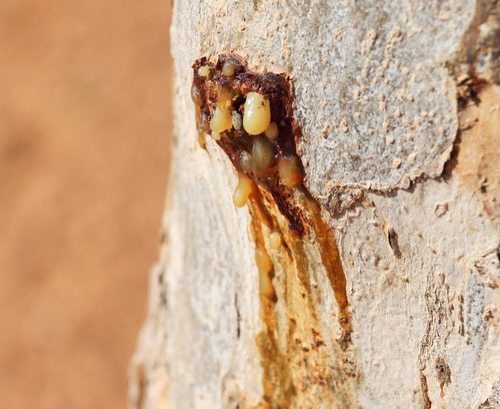
Myrrh is a resin that has a bitter taste; its name is derived from Hebrew murr or maror, meaning bitter. Myrrh traditionally came from Punt; this area was probably in Somalia, Ethiopia or Eritrea, but it may have been in Yemen, Oman or Southern Arabia. The domestication of the camel around 1200 BC stimulated the growth of the incense trade with Eygpt and eventually with Greece and Rome. Tapping is the method to extract resins which is done twice a year. To extract resins, an incision is made in the trunk of the tree, which pierces gum resin reservoirs located in it. The incisions are made all the way up from the root to those of the branches that are strong enough to bear it. The sap slowly oozes from the incisions and drips down the bark, forming tear-shaped droplets that are left to harden on the side of the tree. These droplets flow as pale yellow liquid, but harden to a reddish-brown masses of many sizes, the average being that of a walnut.

Frankincense is the resin from the tree Bosellia sacra, unique to Southern Arabia. When burned, the resin produces a white and fragrant smoke which was thought to carry prayers to heaven. It was burned as offerings to Greek and Roman gods and buried in Egyptian royal tombs. It was also used to fumigate clothes and homes and counter bad smells. Myrrh is the resin of the tree Commiphora myrrha that grows in Southern Arabia and Somalia. The smoke of Frankincense smells vaguely like burning tires when placed directly on a hot coal as shown above. But the aroma is complex, smelling like pine with deep musky undertones. The room is left smelling perfumed, with a very ancient and musky piercing sweetness. The aroma of myrrh is exotic, warm-balsamic and sweet and when fresh spicy-aromatic, sharp and pungent. There are special incense burning charcoals and burners made, and the charcoals are “self-starting” by just touching a flame to them. But they have problems, the self-starting coating contains sulfur, and lighting it smells like burning a dozen match books indoors.

Because both frankincense and myrrh contain oils which can burn when heated, I prefer to warm the granules more slowly as shown above. I also like a mixture of frankincense and myrrh. Even better is tin foil on a gas burning stove or candle. The goal is to melt the resin into a fragrant pool without burning it.
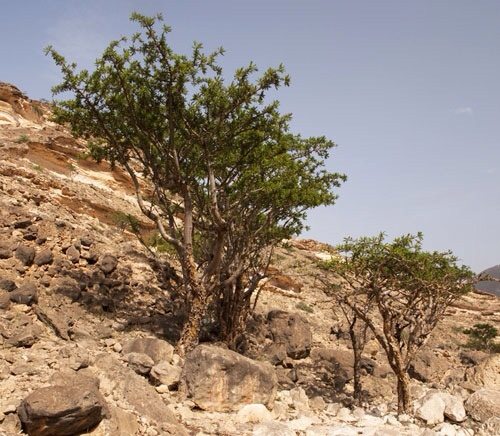
Commiphora myrrha is the chief source of myrrh today, while Commiphora erythraea was probably the “ntyw” (myrrh) of the ancient Egyptians and the “scented myrrh” of Pliny. The classical author Dioscorides, writing in the 1st century AD, suggests that myrrh could cure dysentery and kill worms and, rubbed on with the flesh of a snail, it could cure broken ears and exposed bones. It was also used to worship the gods and to flavour wine and to mummify the dead in ancient Egypt. From a culinary perspective, Pliny points to the spicing of wine with myrrh among the Romans (catissima apud priscos vina erarit murrae odore condita; Pliny, Nat. Hist. 14.92), acting as a preservative and imparting a slightly bitter taste. In fact, Roman wine would have been highly aromatic as wine amphorae were lined with a resin from pine trees, so imparting a distinctive flavour to some of the long-hauled wine in the Roman Empire, which is basis for retsina idea today. It is interesting to note that in the Babylonian Talmud wine is mixed with frankincense not myrrh, and it was given by the women of Jerusalem for those condemned to death to numb the senses – “Give strong drink unto him that is ready to perish, and wine unto the bitter in soul.” Myrrh was an ingredient of Ketoret, the consecrated incense used in the First and Second Temples at Jerusalem, as described in the Hebrew Bible and Talmud. An offering was made of the Ketoret on a special incense altar, and was an important component of the Temple service.
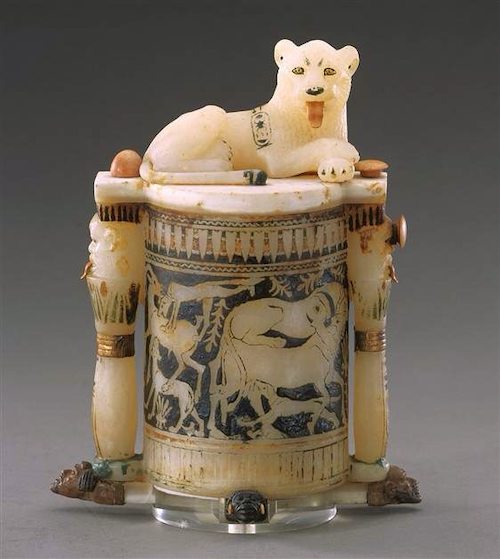
The Egyptians took the aromatic qualities of frankincense and myrrh even further and used it in the embalming process. Part of the process of mummification involved the removal of the viscera, which were then placed in special containers. Large quantities of frankincense and myrrh were then packed into the body cavities to prevent decomposition, and to mask the odor. When the tomb of Tutankhamun was found, they made an amazing discovery. In the Valley of the Kings at Thebes, archeologists found huge quantities of oils, perfumes, and incense around his mummified body. This carving is one of the treasures that was featured in “Tutankhamun and the Golden Age of the Pharaohs,” one of the exhibits that was brought to the United States.

The essential oil of frankincense and myrrh is produced by steam distillation of the tree resin. This takes the burning completely out of the equation and gives you the perfect aromatic experience. So cherished was Olibanum, used to stimulate the olfactory sense, that it was later bestowed as a gift by three wise men who knew this holy oil as Frankincense. It was said that Spikenard stimulates psychic powers. The Egyptians believed Palm to be the revitalizing oil of life and energy. Myrrh was considered a blood stimulant for the body and Juniper Oil was utilized to calm, cool and cleanse. Fo-Ti-Tieng, a sexual stimulant was revered centuries later by the last Emperor of China—its use restricted to the Forbidden City. Lotus Oil used only by Egyptian females was celebrated as the sweetness of women. Marilyn Miglin was commissioned by the Chicago Field Museum for their exhibit “Tutankhamun and the Golden Age of the Pharaohs,” to create the oils capturing the scents considered sacred by the ancient Egyptians. The collection includes Spikenard, Olibanum, Palm, Myrrh, Juniper, Fo-Ti-Tieng, and Lotus. More information can be found at the Marilyn Miglin website.
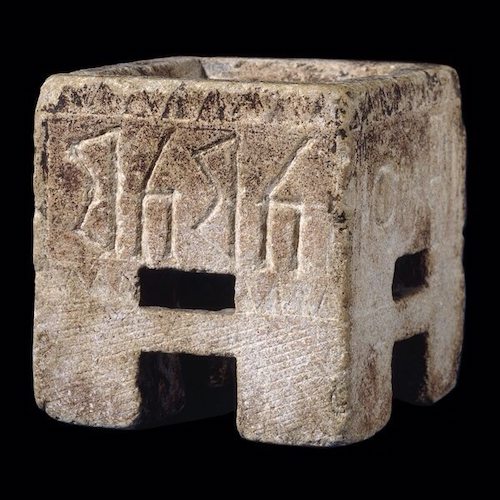
Cuboid incense burners have a long history in the ancient Near East. They were particularly popular in the Levant and Arabia from the late fifth century BC to the first century AD and were specifically used to burn natural aromatics within the home and temple. This type of cuboid incense burner is often inscribed with the names of specific aromatics from the range of woods, barks, roots and resins used in South Arabia, many of which have yet to be identified. This example is inscribed with the names rand, darw, kamkam and qust. The name libnay, which refers to frankincense, is also inscribed, though less frequently, possibly because it was traded abroad and was therefore less often used in local rituals. No burners are inscribed with the name myrrh, which presumably indicates that it was not burned, though it was used in medicine and possibly also in the preservation of the dead.
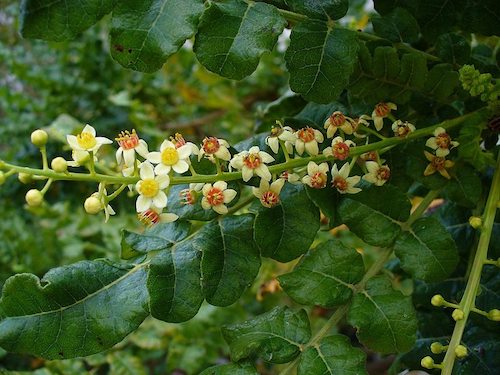
For frankincense the harvesting is timed with the advent of the hot season and begins in Somalia by the end of March and in Dhofar (Oman) by the beginning of April. Based on age, size, and location, 10-30 scorings are made on each tree. Within each allotted plot, a rotation of trees is practiced to maximize production. Upon scoring, a white sap (luban) is extruded. The particular details of the tapping-the time of year it is undertaken, its duration, and the interval between individual tappings-vary according to the species and the customs in the area of production. For example, in Somalia there are usually two periods when Boswellia is tapped, each lasting 3-4 months, involving successive tappings at approximately 15-day intervals, with the timing of the tapping periods dependant on the onset and extent of the rains. Healthy trees are tapped for three years running then placed in fallow for a number of years. Each tree is capable of producing from three to more than 10 kg. annually. (Myrrh trees produce three-four kg. per tree annually).
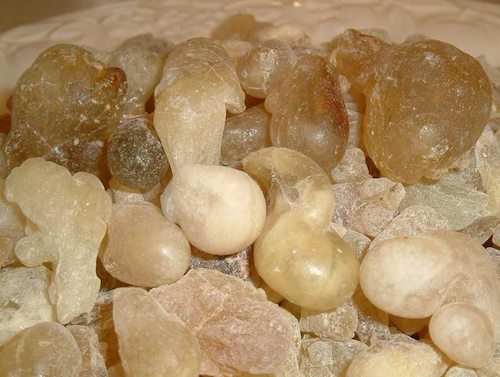
In Oman, frankincense is gathered by Bedouins; trees are owned by the families living in a particular area where they grow. The guardianship of the trees is passed on from generation to generation, and there are ancient rituals surrounding the harvesting of the resin. On the southern Arabian coast, the trees are tapped yearly by visiting parties of Somalis, who pay the Arabs for the privilege of collecting frankincense. Frankincense trees are found in Oman, Somalia, Ethiopia, Yemen, the southern Arabian Peninsula, and India. The desert of the Dhofar region in southern Oman is the source of Boswellia sacra, sacred frankincense. The Boswellia serrata, Indian frankincense, is widely distributed and abundant in the dry, hilly parts of India. The trees on the Somali coast grow out of polished marble rocks without soil; the purer the marble the stronger the tree. The Boswellia papyrifera grows primarily in Ethiopia and Sudan. “In order to produce the resin the trees need moisture during the night or rainfall for a few weeks. In the absence of rain there is not enough moisture or sap being produced and hence not enough gum,” comments Lubanchem’s Sadqa Haq. “This leads to unethical and methods of collecting tapping gum that are not sustainable.” Experts say the number of trees could decline by 50% in just 15 years. While it is difficult to know for sure, the Romans imported about 3000 tons of frankincense a year, and today the total world demand is larger, perhaps as much as 6000 tons/year, used mostly for perfumes and churches.
Roman consumption of spices in general began to decline in the third century, and importation of frankincense dropped with it. Among the primary reasons suggested by historians is the severe drain on Roman assets overall as gold was bled away to the East. Roman trade goods were worth a fraction of imported goods, and the Empire was hemorrhaging money. Pliny estimated that 1,000,000 sesterces a year were being spent on imports, money that was not being replaced by income. Today, Somalia and Yemen are among the poorest countries in the world.
References:
Bad news for Frankincense: http://blogs.scientificamerican.com/extinction-countdown/2011/12/21/christmas-frankincense-uncertain-future/
Frankincense Nursery: http://www.nytimes.com/2011/12/08/garden/replicating-the-slightly-plantable-gifts-of-the-magi-in-the-garden.html?pagewanted=all&_r=1&
Myrrh Steenberg's Blog: http://www.steenbergs.co.uk/blog/2012/01/a-little-bit-about-myrrh/
Incense Fragrantica: http://www.fragrantica.com/news/What-is-Incense–2503.html
Seven Sacred Oils Marilyn Miglin: https://www.marilynmiglin.com/product/pheromone-seven-sacred-oils-1099.cfm#.UNstKJG9KK0
Archeology Fund: http://www.arabian-archaeology.com/incense4economics.htm
Socotra: http://ue.ucdavis.edu/explorations/2005/grant.pdf
Naha Botony: http://www.naha.org/articles/frankincense%20and%20myrrh.htm


